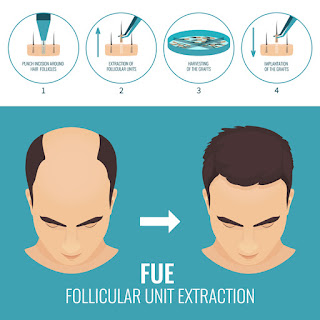How Does Hair Transplantation Work?
This is a basic article on how modern hair transplants work, and a brief review of the history of hair restoration to understand our development today. When many of my patients came to me, they were just confused about how the hair transplant works and what needs to be done over time to maintain its effect.
Let's get back to the beginning. As early as 1939 and 1942, Japan's Okuda and Tamura found that hair transplanted from the back of the head to restore pubic hair loss can survive and grow. This type of transplant has proven to be an important step because of the public bathing habits in Japan and the disease status of young Asian women suffering from pubic hair loss. It makes people know that hair transplanted from one part of the body to another will flourish. And survived. However, it was not until the famous New York dermatologist Norman Orentreich in the 1950s that hair moved from the back of the head to the front of the head. Best hair transplant surgeon in Delhi As time went by, hair loss would not be like there. The original hair is lost. He called this phenomenon "donor advantage", meaning that the hair moved from the back of the head to the area of genetically susceptible hair loss, which would retain the characteristics of the donor's hair and would not pass over time. This is an outstanding breakthrough that we need to know, and although it is transplanted into areas that are prone to hair loss, the results will continue to exist.
If you want to know why the hair at the back of the head is not easy to lose hair? Ok, only God knows. But it is true. Think about the baldest person you know (he hasn't shaved his hair behind his head). He still has hair there. Even the baldest person has horseshoe hair in the back of the head. Then, the only trick for hair transplanting is to know which area is "safe" for the transplant, ie, as the age increases, which area will not be lost over time. This is one of the main reasons why transplanting a person at the age of 20 may be problematic. We don't know at all that as time goes by, the back of the head won't lose much hair. In addition, as we age, as more (untransplanted) hair falls off, we may run out of the donor's hair to transplant the front of the head and maintain natural results.
This judgment is indeed one of the main attributes that distinguish experienced physicians from novices. Knowing who to perform surgery (ie who is safe and who is not) is a basic prerequisite for safe hair transplant work. Fue hair transplant Delhi According to the law of supply and demand, the donor hair density is high, that is, there are many hair follicles per square centimeter in the donor area, and in many cases, the baldness can be covered naturally. The surgeon's judicious use of the graft in a good pattern distribution and good angle will help to ensure the degree of hair loss and the available supply of donor hair for a given person, with natural and intensive results.
Another question that is often asked is: "Is the transplanted hair the same as the other hair I have not transplanted? hair transplant cost in Delhi Will I cut it like other hair?" The answer is yes. I further explained that the hair transplant process simply moves the hair from one side of the head to the other, just like taking a flower from one basin and moving it to another. It will grow in the new environment as before. Even if the number of transplanted hairs is not exactly equal to the number of hair loss, the surgeon can use good techniques to make 5,000 transplanted hairs (usually major surgery) look like 50,000 hair loss (the beginning of hair loss to baldness). Become obvious. )
I hope this short article understands how modern hair transplant works and helps people who are curious about how the process works or who are seriously considering the process.
To learn more about hair loss and hair recovery, visit www.personahair.com or call 7838140100



Comments
Post a Comment